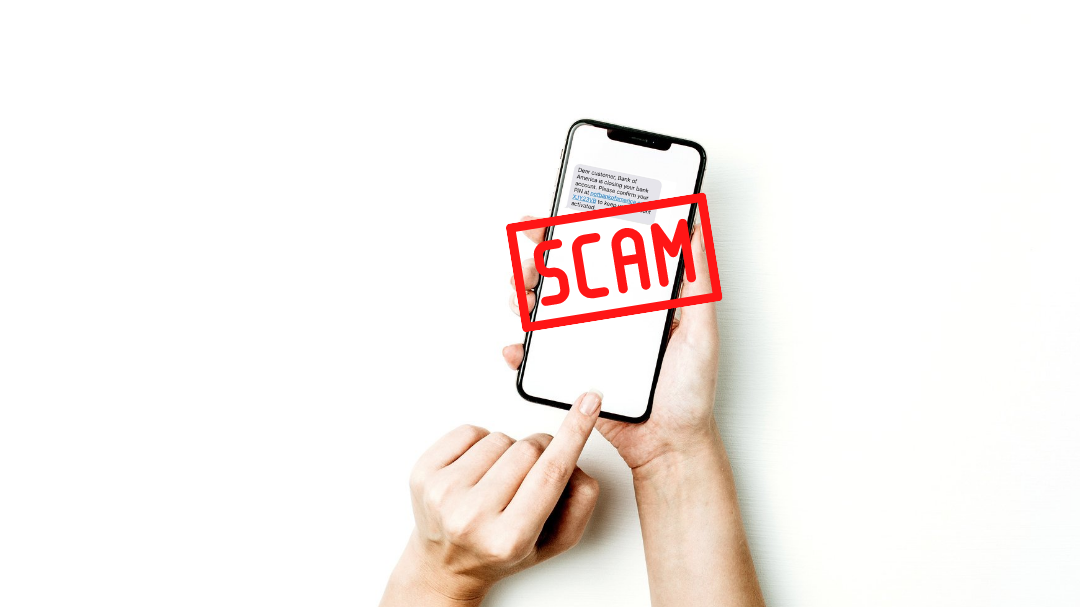Fake ‘missed parcel’ text messages: How to avoid scams

Being able to track your parcel has been a useful feature for many years now. Impatient worries were healed by simple timeline notifications of exactly where their item is, and at what time it is due to arrive. Whether it is something expensive, a gift or something you need urgently, being able to track your delivery is something we all benefit from.
Sadly, the reliance we have on technology has paved the way for cybercriminals to advantage in more ways and through more devices. The most recent trend is so realistic, it could catch anyone out, even those who think they’re more technically switched on. According to consumer champion ‘Which?’, 60% of people this year have been victim to scam messages claiming to be from a delivery company, and 1 in 30 people have lost money as a direct result of the messages.

How delivery phishing scams work
Crafty scammers pose as a real delivery company. They send relatively legitimate notifications to anyone, whether that be via text or email. They claim that you have missed the delivery of a package including a link directing you to enter in your card details to cover the “re-deliver fee”. Sometimes the links will direct you to phishing sites, masked as delivery sites, and prompt you to enter personal information so they can collect your data for their own gain, most commonly credit card details.
Understanding the Increase in “missed delivery” text scams during this time of year
During the busy Christmas period, more and more “missed delivery” charge scams are in play. In 2020 online sales rose to 32.8% compared to previous years, highlighting that as online shopping popularity grows, even more of us are going to be waiting on packages and deliveries to arrive from various couriers than ever before. Action Fraud said in the first week of December 2020, it had heard from 35 victims who had lost a combined total of £103,000 to a DPD text scam. Due to the influx of people getting these text messages, sometimes more than once, couriers such as DPD, Hermes and many more have had to update their website with disclaimers or top of the page banners directly addressing this ‘phishing’ issue.
What to do if you get a suspected fake “missed delivery” text
- Do not click on the link, block the number or email straight away, and then delete the message
- Report the message as spam
- Set your mobile phone to update software automatically. These updates could give you critical protection against security threats
- If you are expecting a delivery and unsure if the message is real, you should contact the courier company directly through their website (not through the link in the suspected spam message), telephone number or email address. This way you can also notify them that someone is posing as them in an active scheme so they can take the necessary actions to protect customers.
Ways to avoid getting tricked by a ‘missed delivery’ scam
- Arrange a click and collect order from the store if there is one nearby. If not, you can always arrange for the package to be collected from a designated pick up point, such as a local newsagent. More retailers are now offering click-and-collect services, and should have information on their websites about what delivery services they provide.
- Arrange a specific delivery time slot. However, many retailers and couriers still give a vague timeframe of when an item is to be delivered – a parcel delivery box is a great option for receiving deliveries without having to be at home.
- Allocate an obvious, yet safe place for the courier to leave your package. You could leave a note to direct the delivery driver to your neighbour’s house, or invest in a secure parcel box. With a Penn Parcel Box, your deliveries are securely stored away out of sight, protected from thieves and the weather. Parcels are collected by you when you get home, or whenever is convenient for you.

The Federal Trade Commission of Consumer Information says:
Phishing emails and text messages often tell a story to trick you into clicking on a link or opening an attachment.
- They may say they’ve noticed some suspicious activity or log-in attempts
- claim there’s a problem with your account or your payment information
- say you must confirm some personal information
- include a fake invoice
- want you to click on a link to make a payment
- say you’re eligible to register for a government refund
- offer a coupon for free stuff